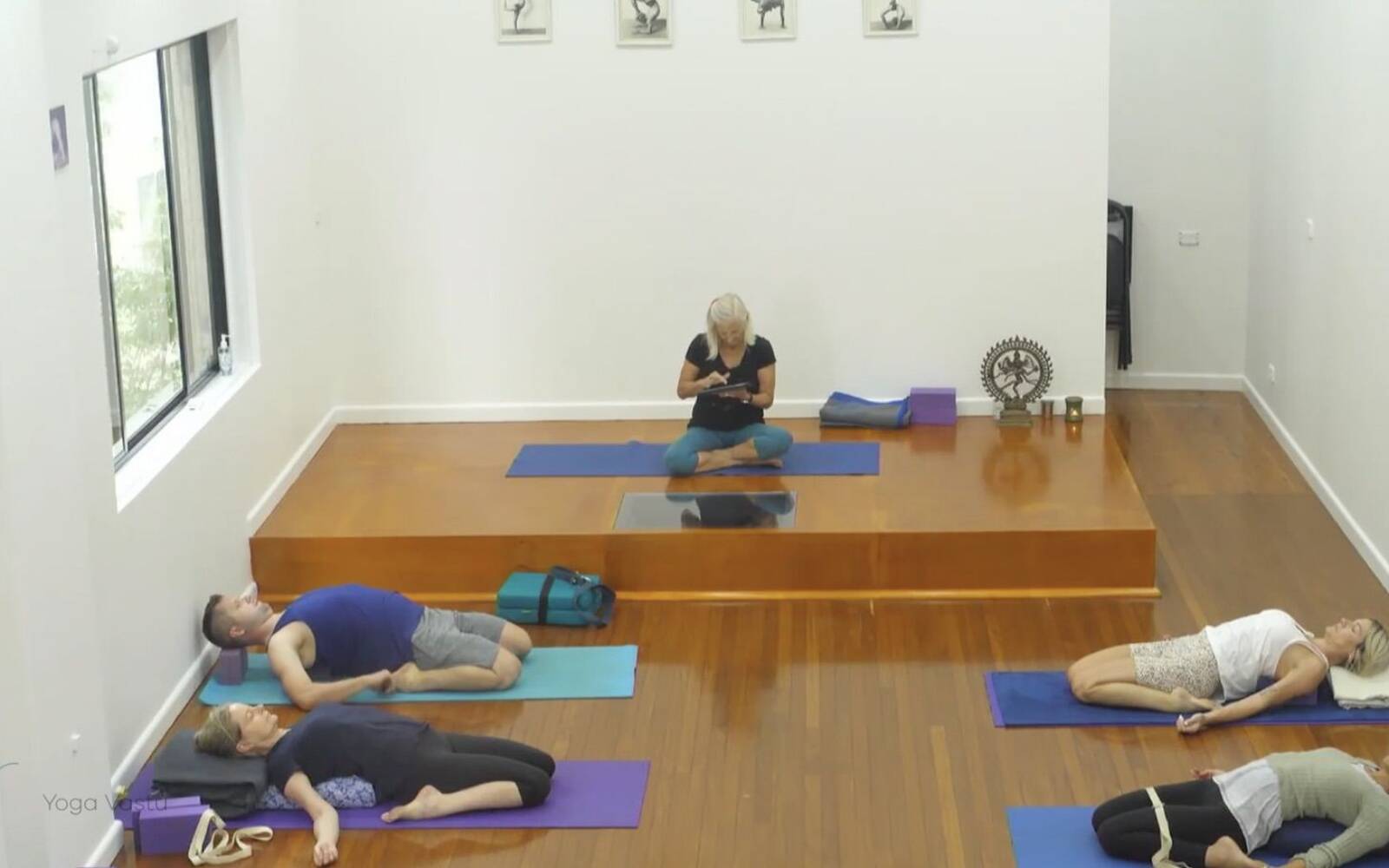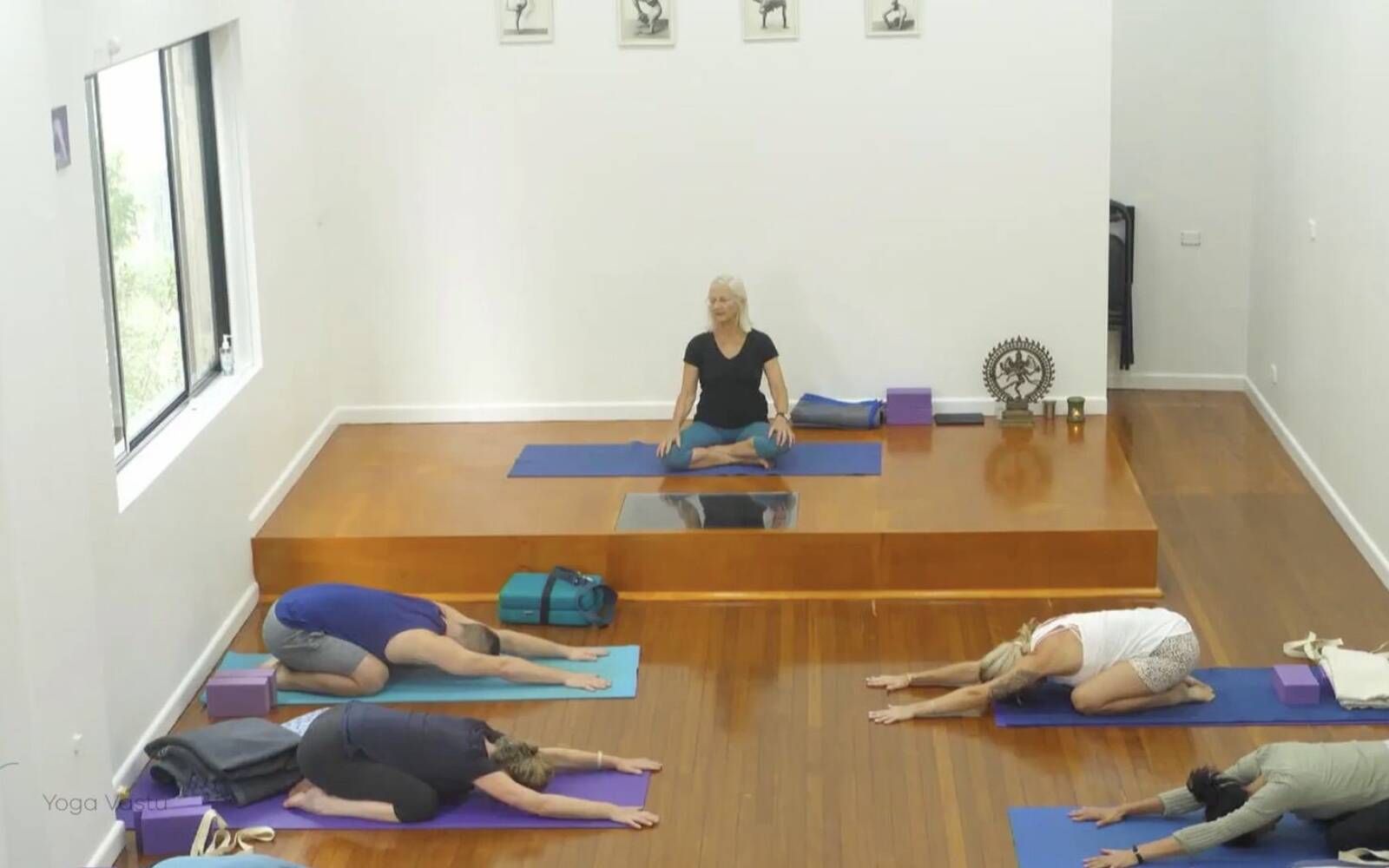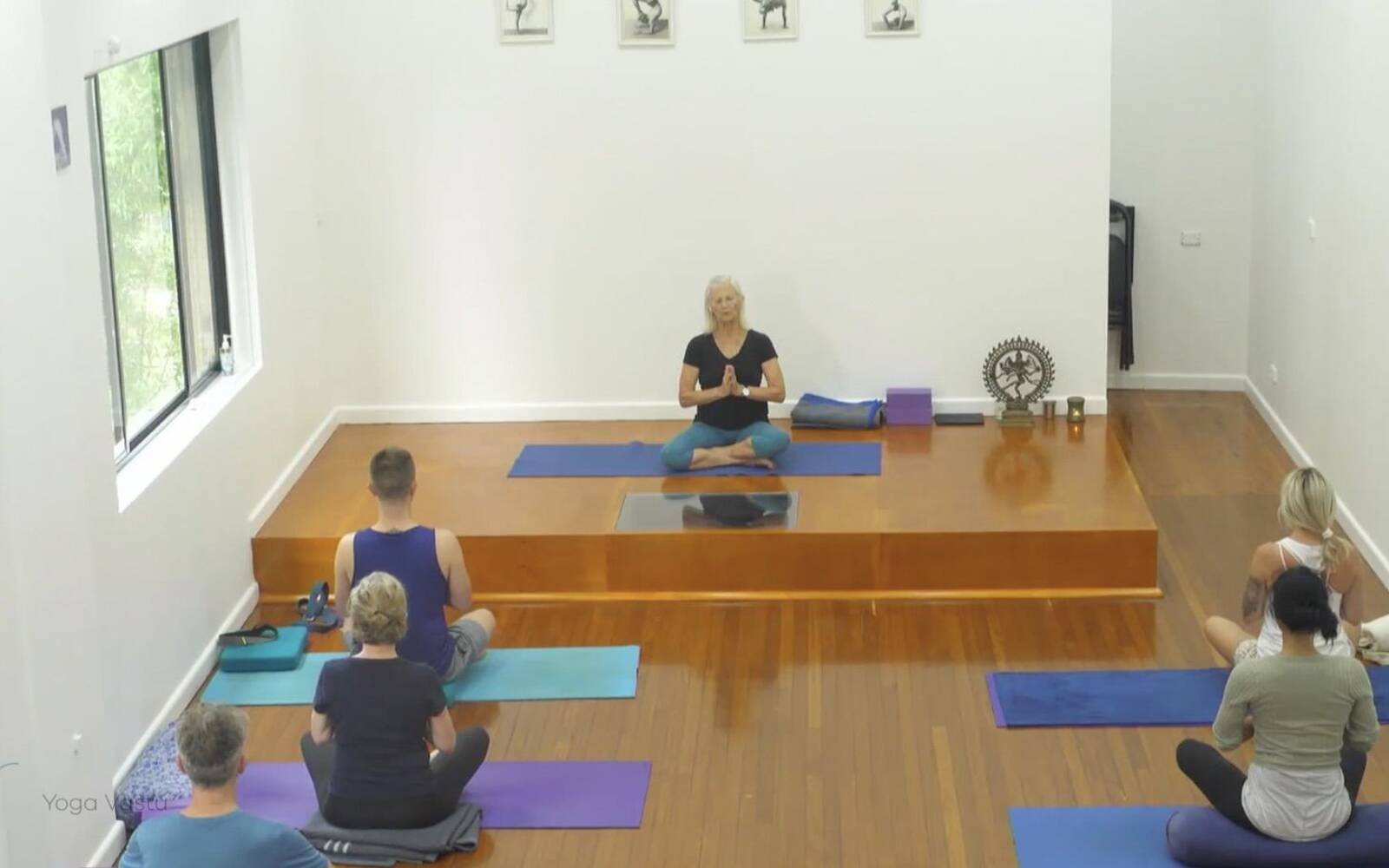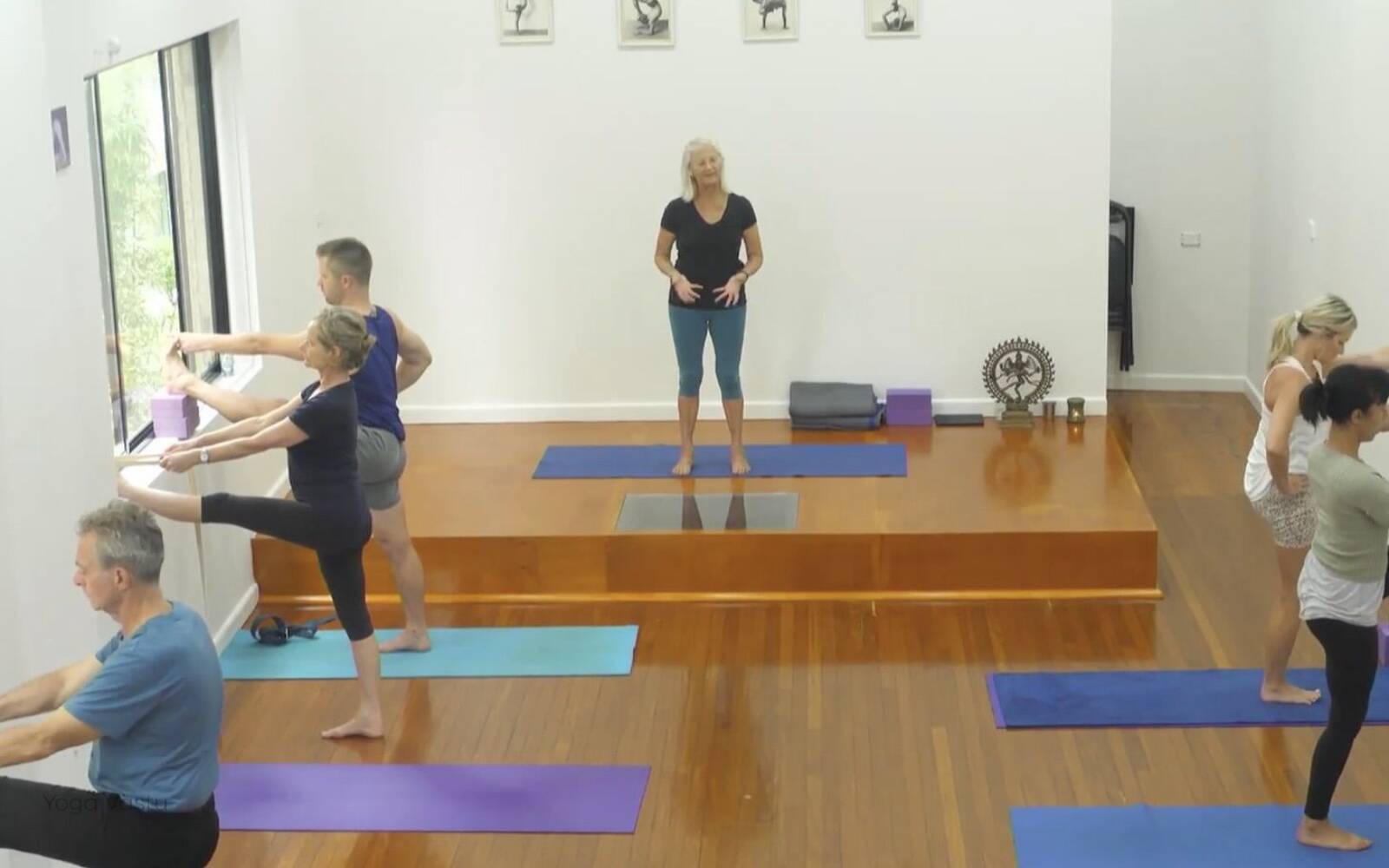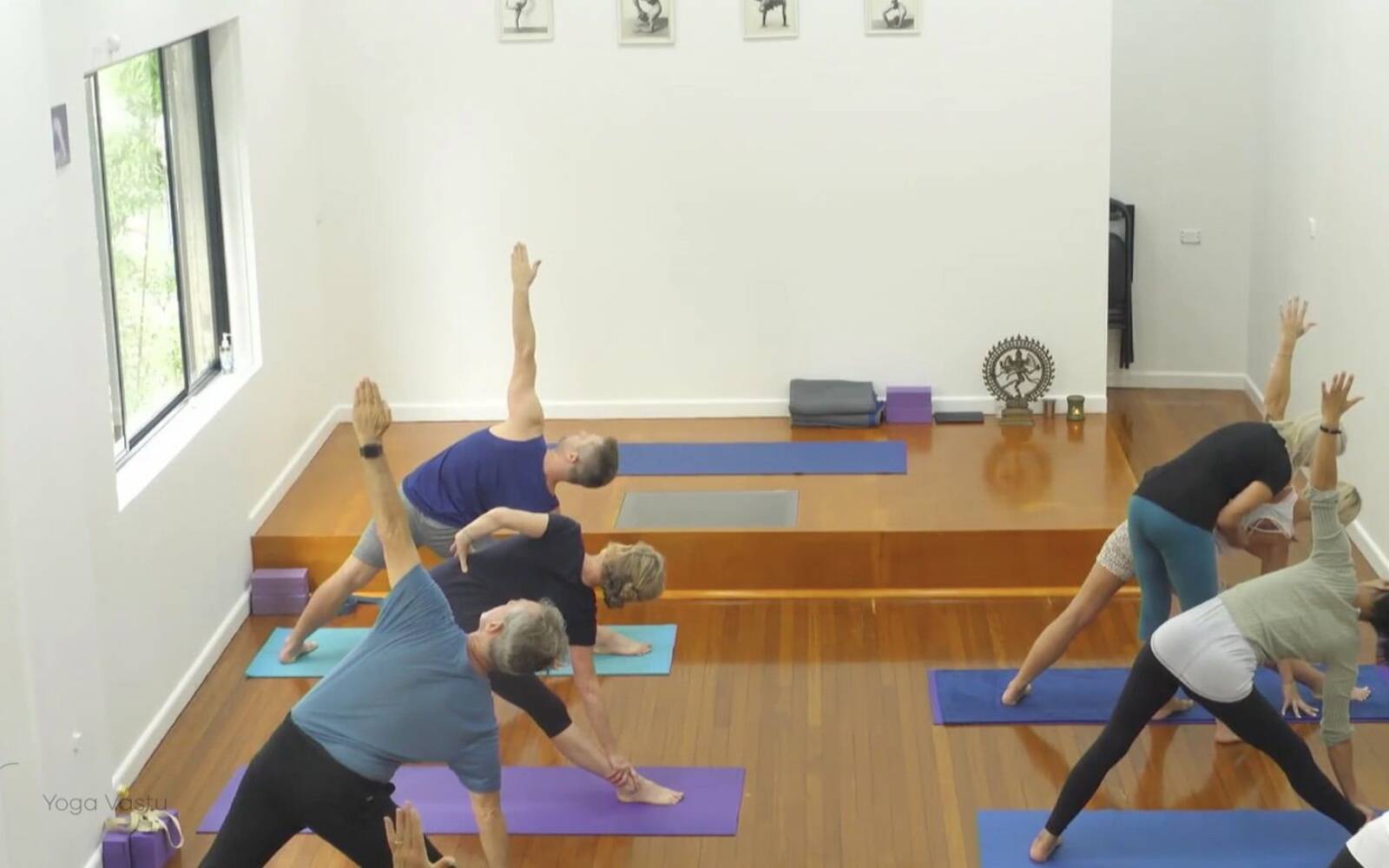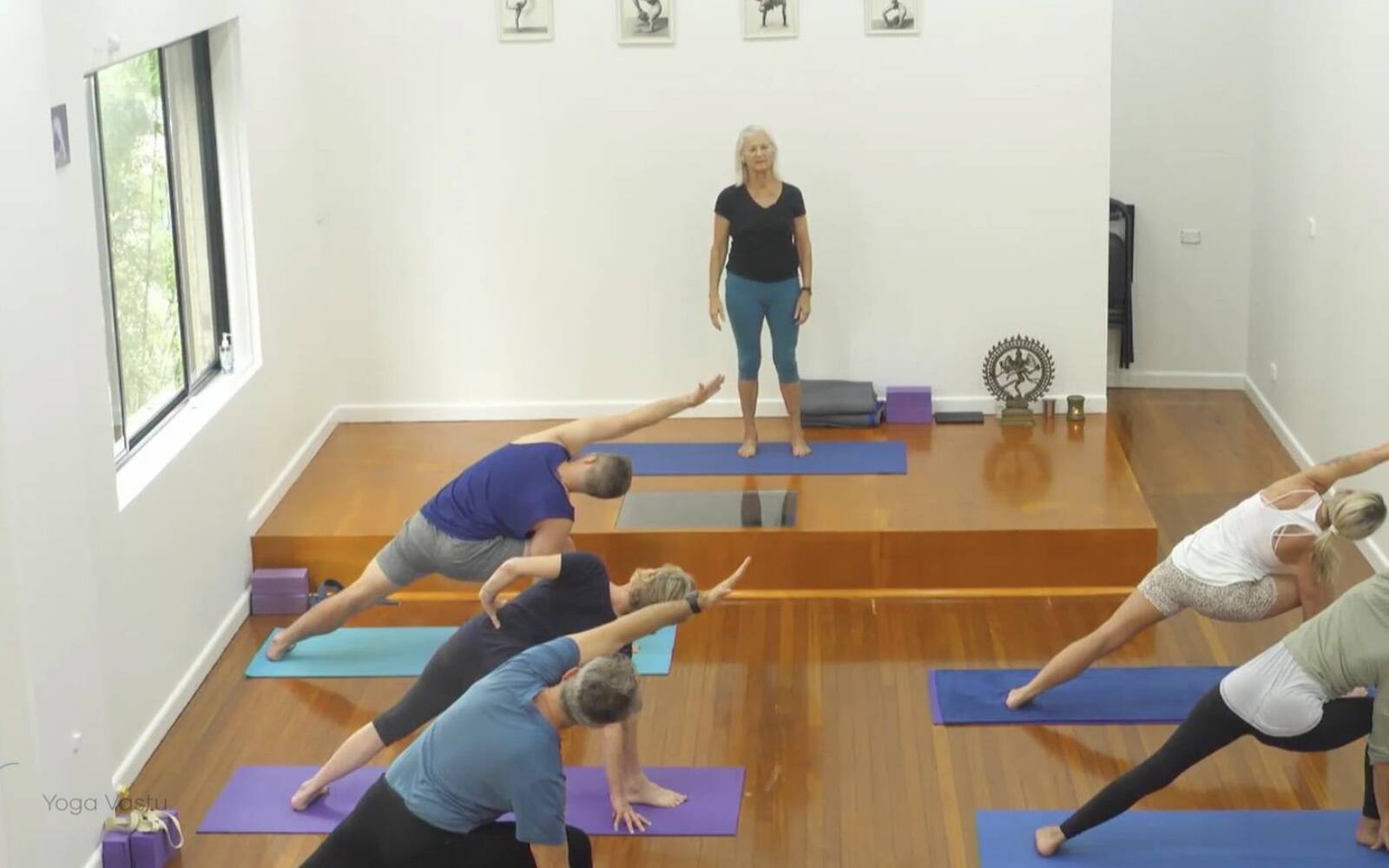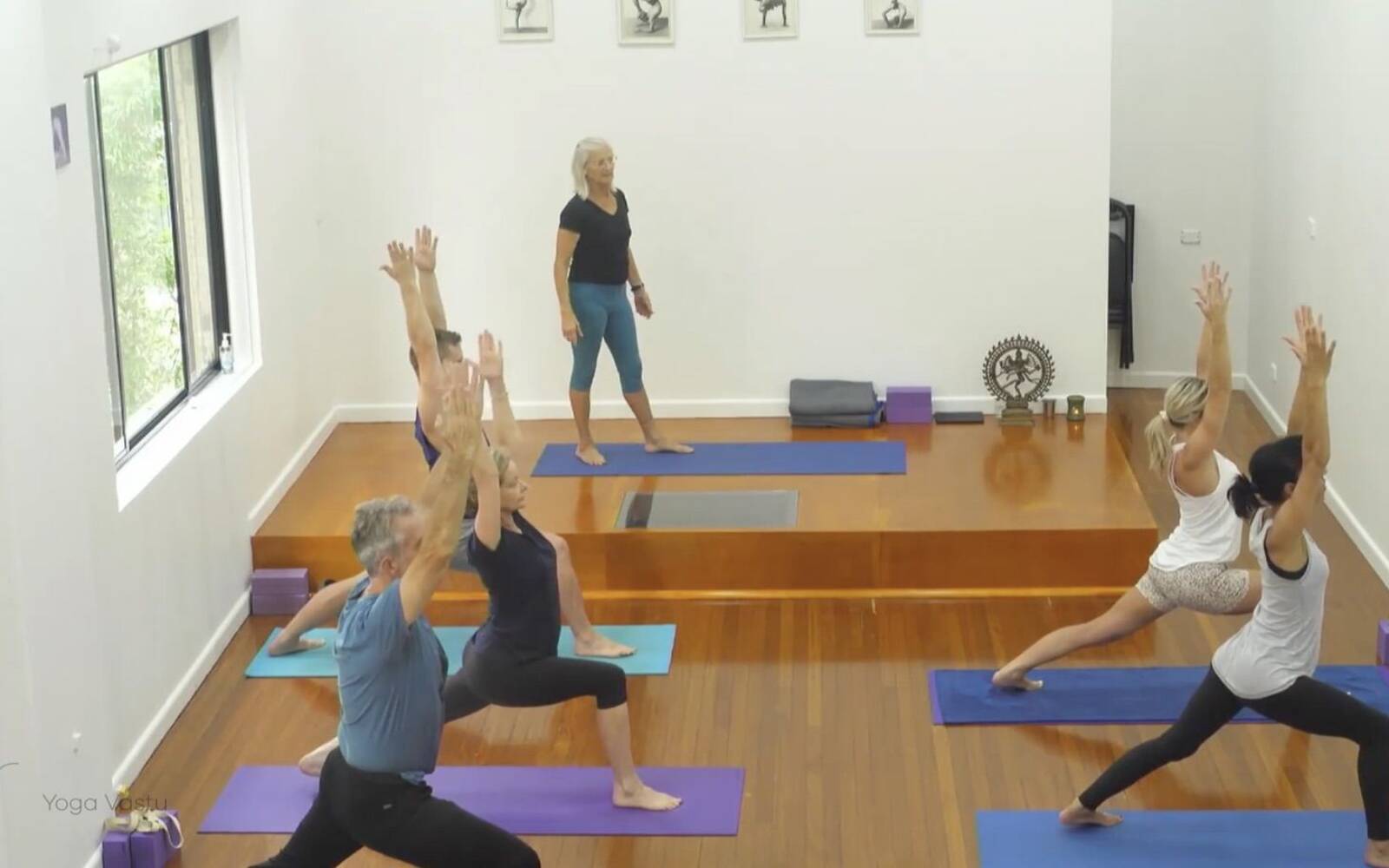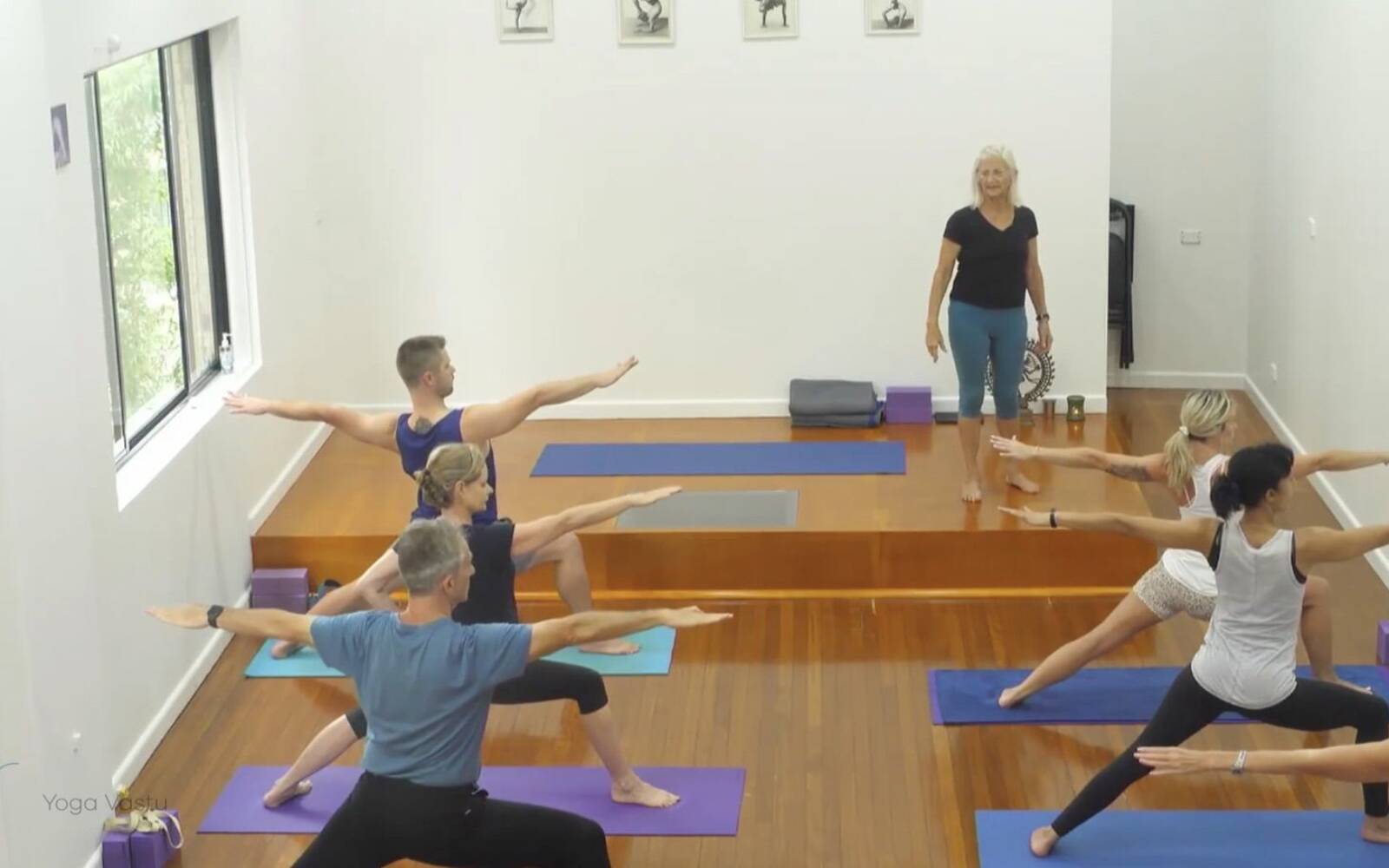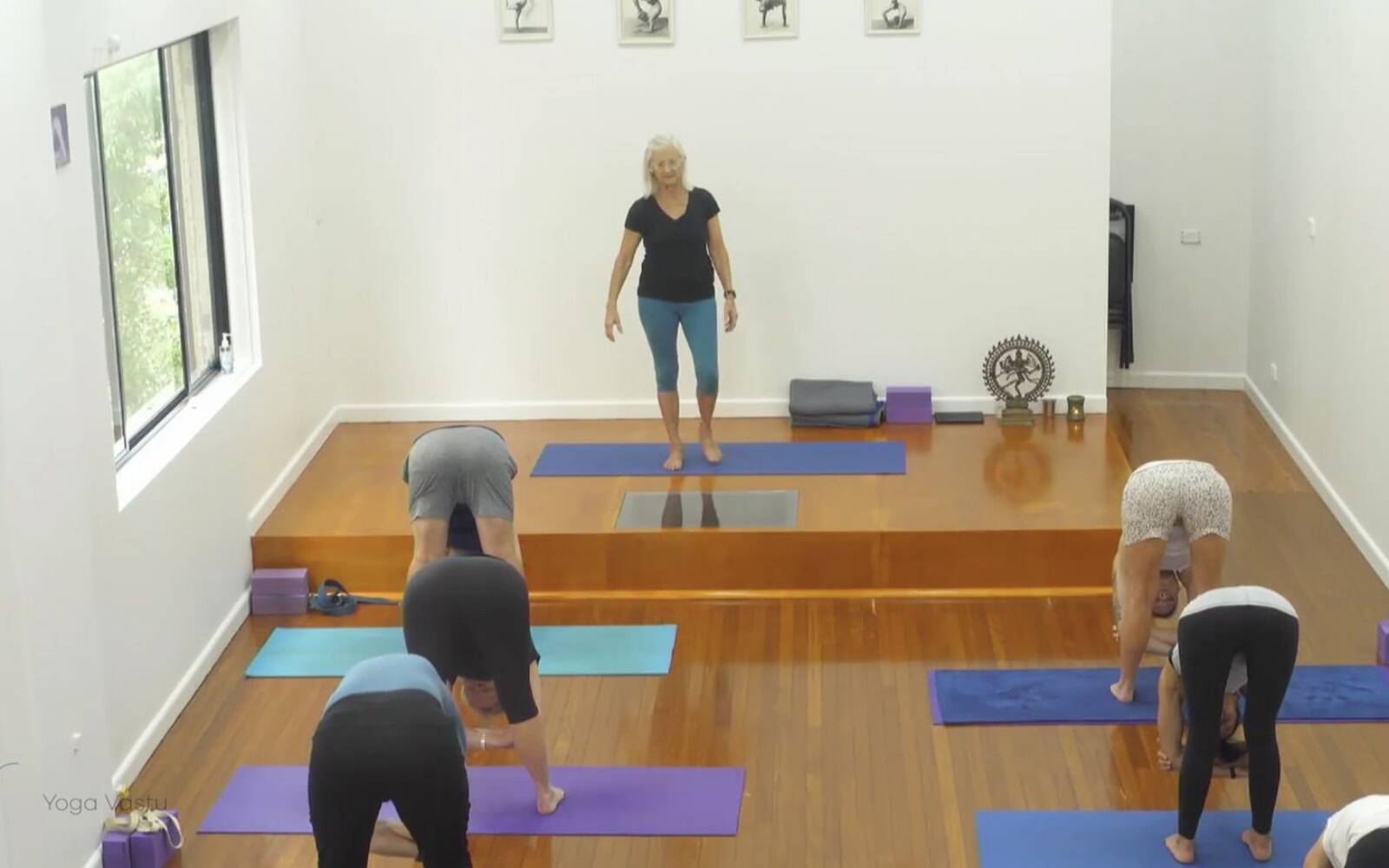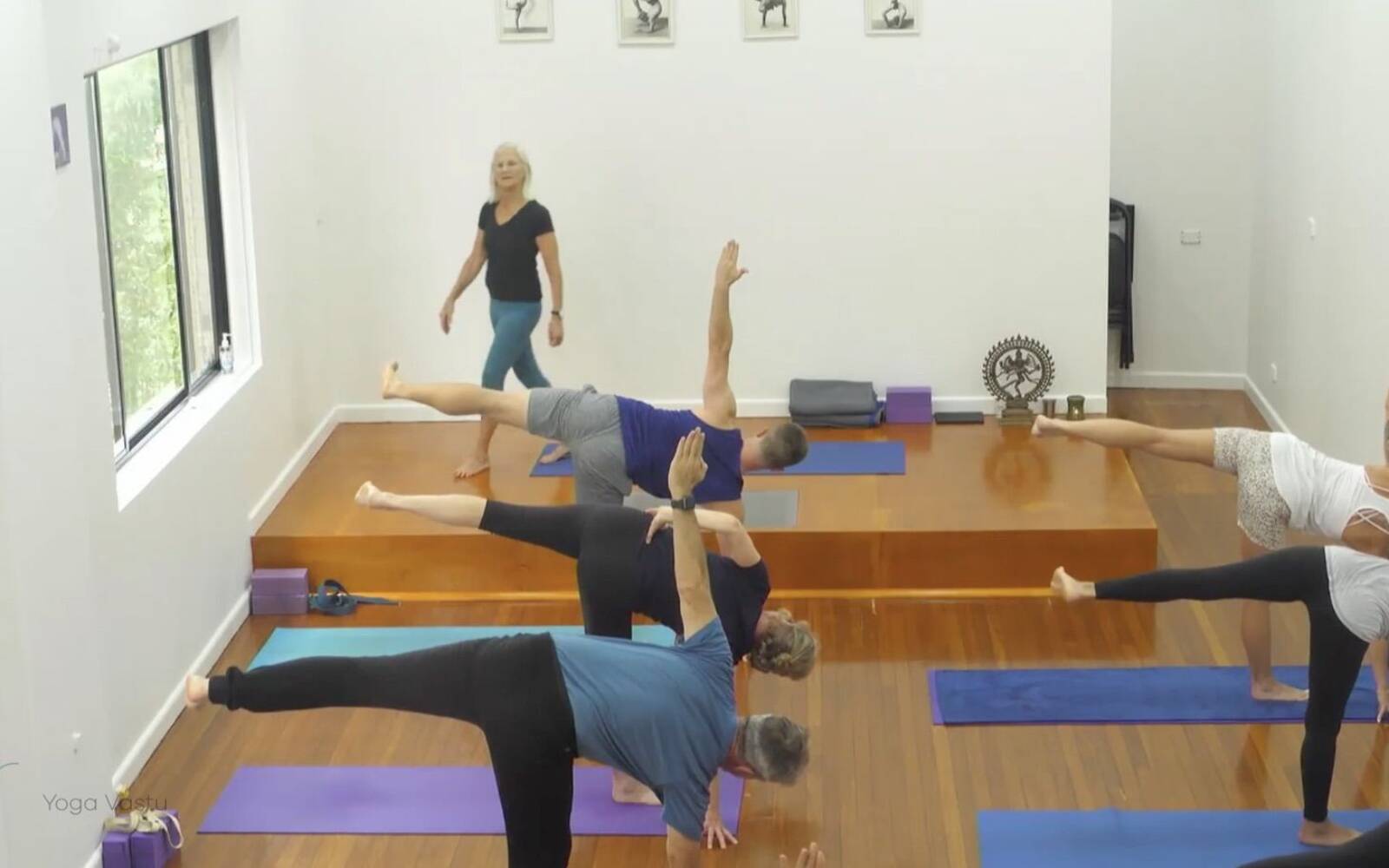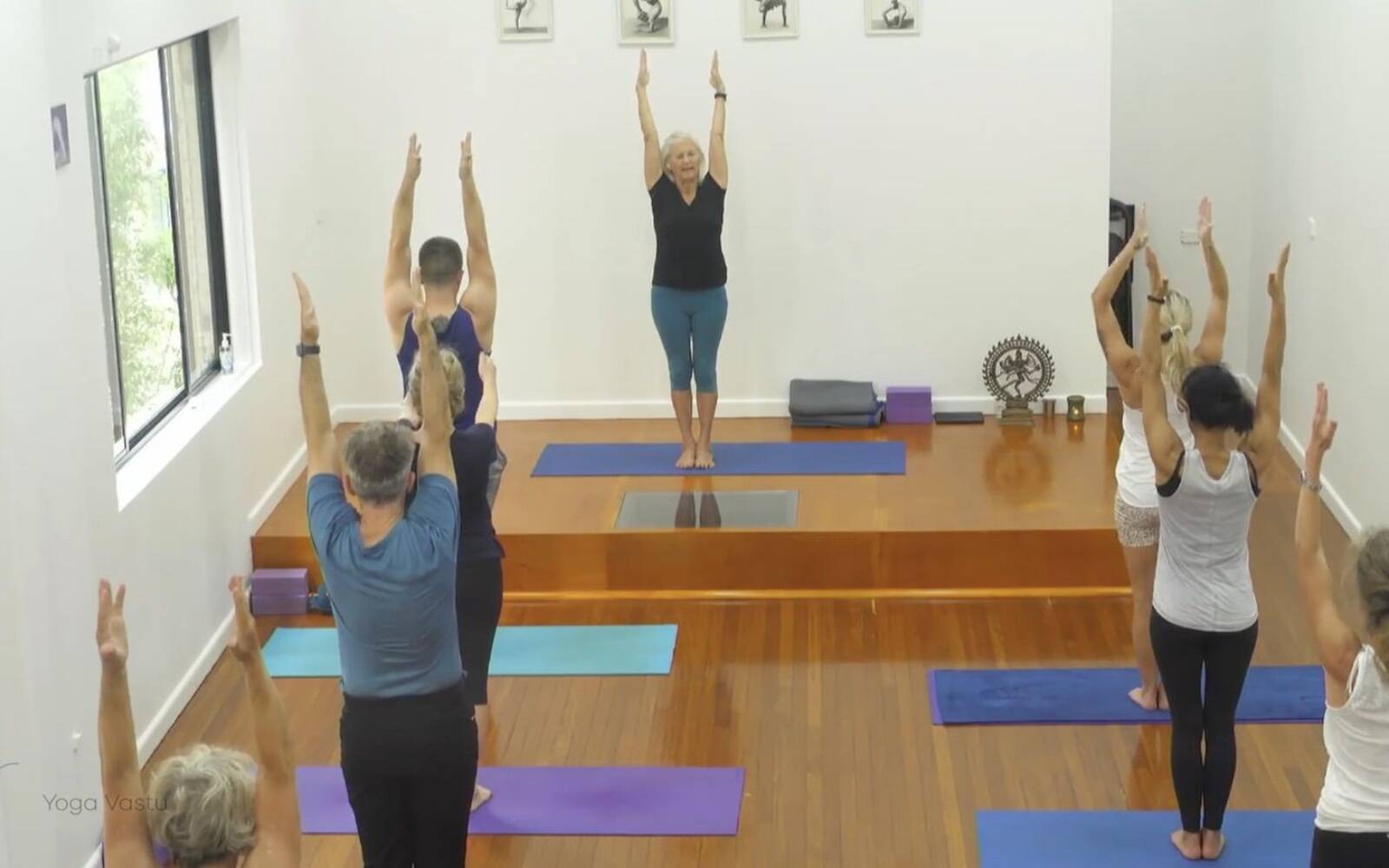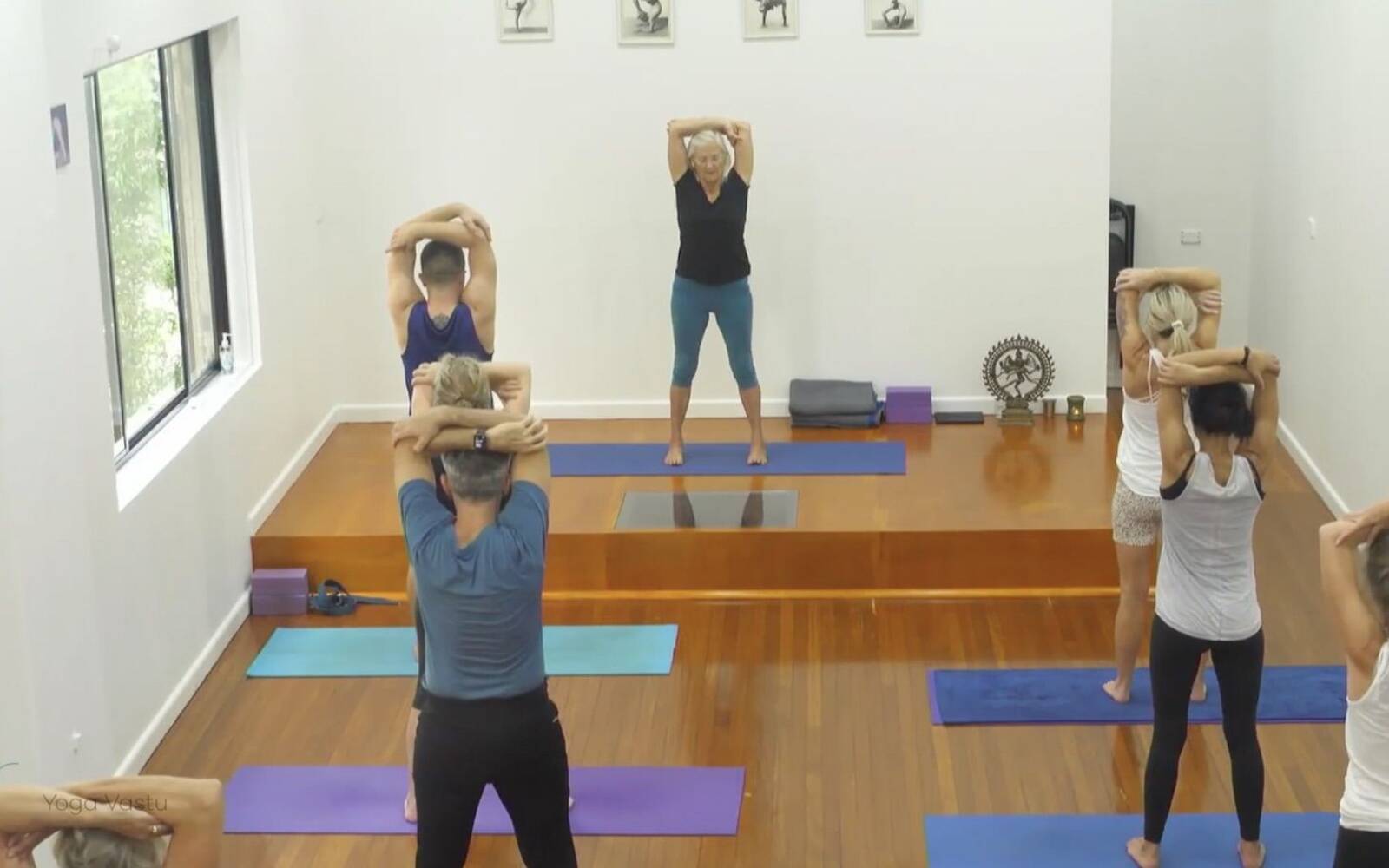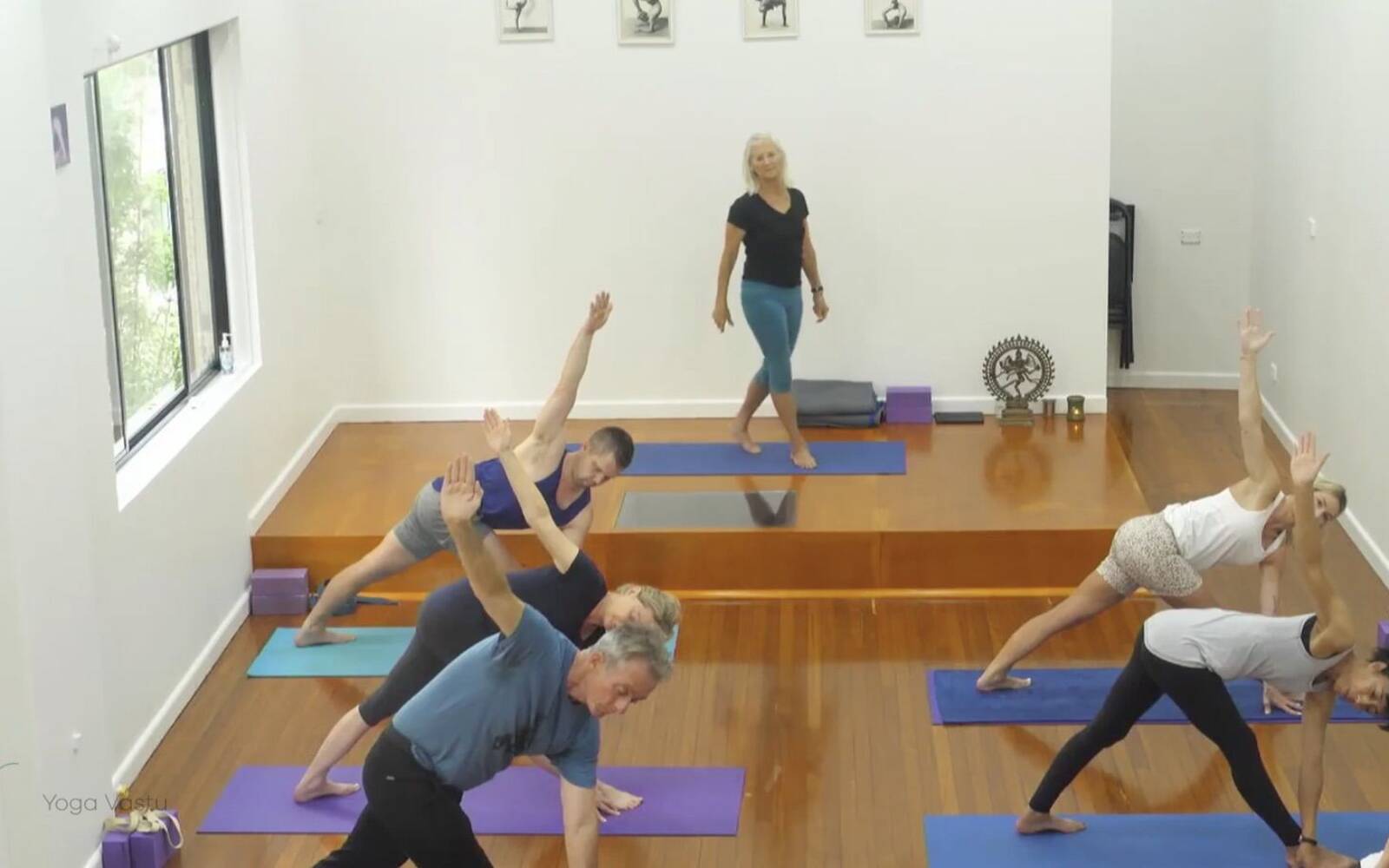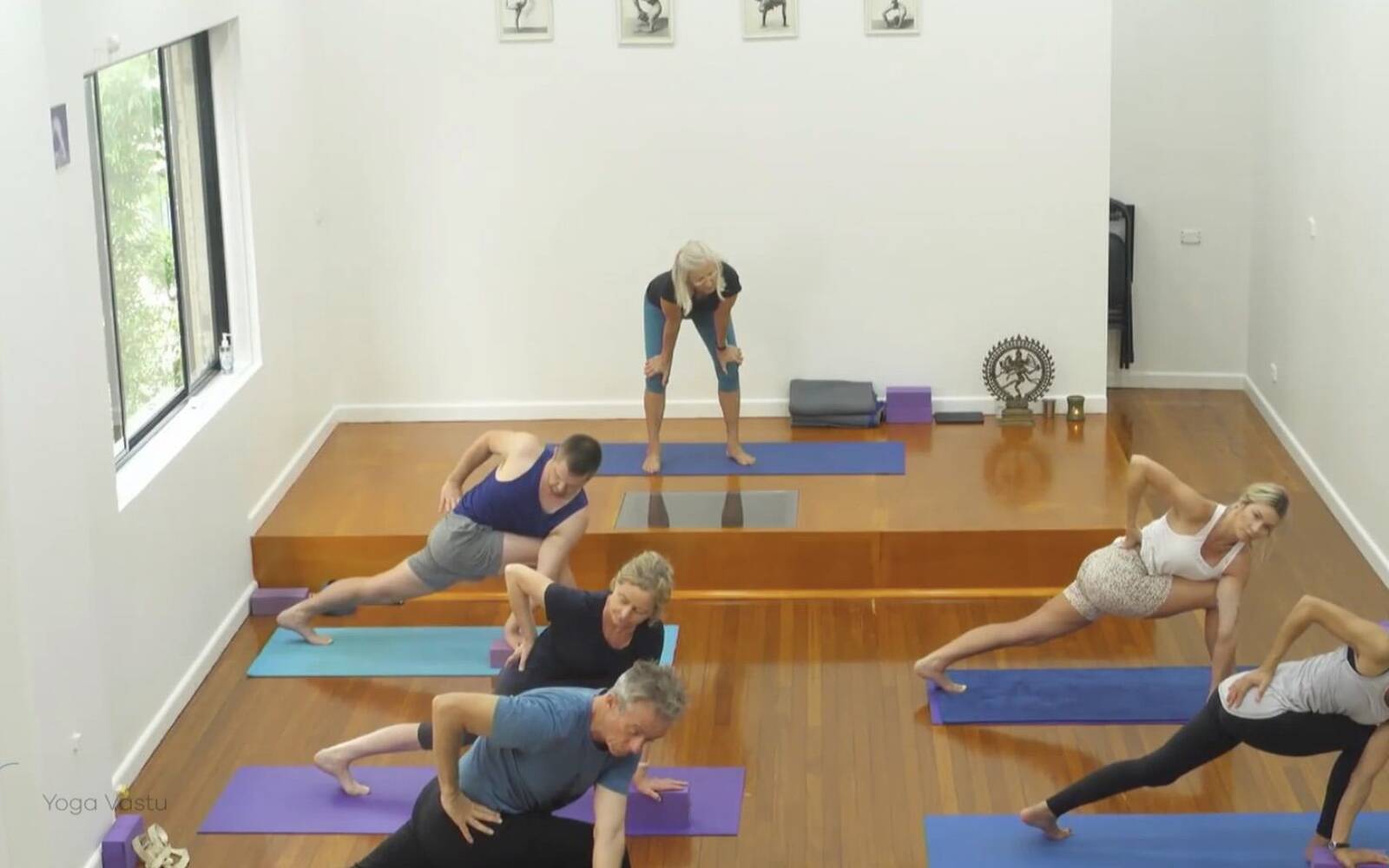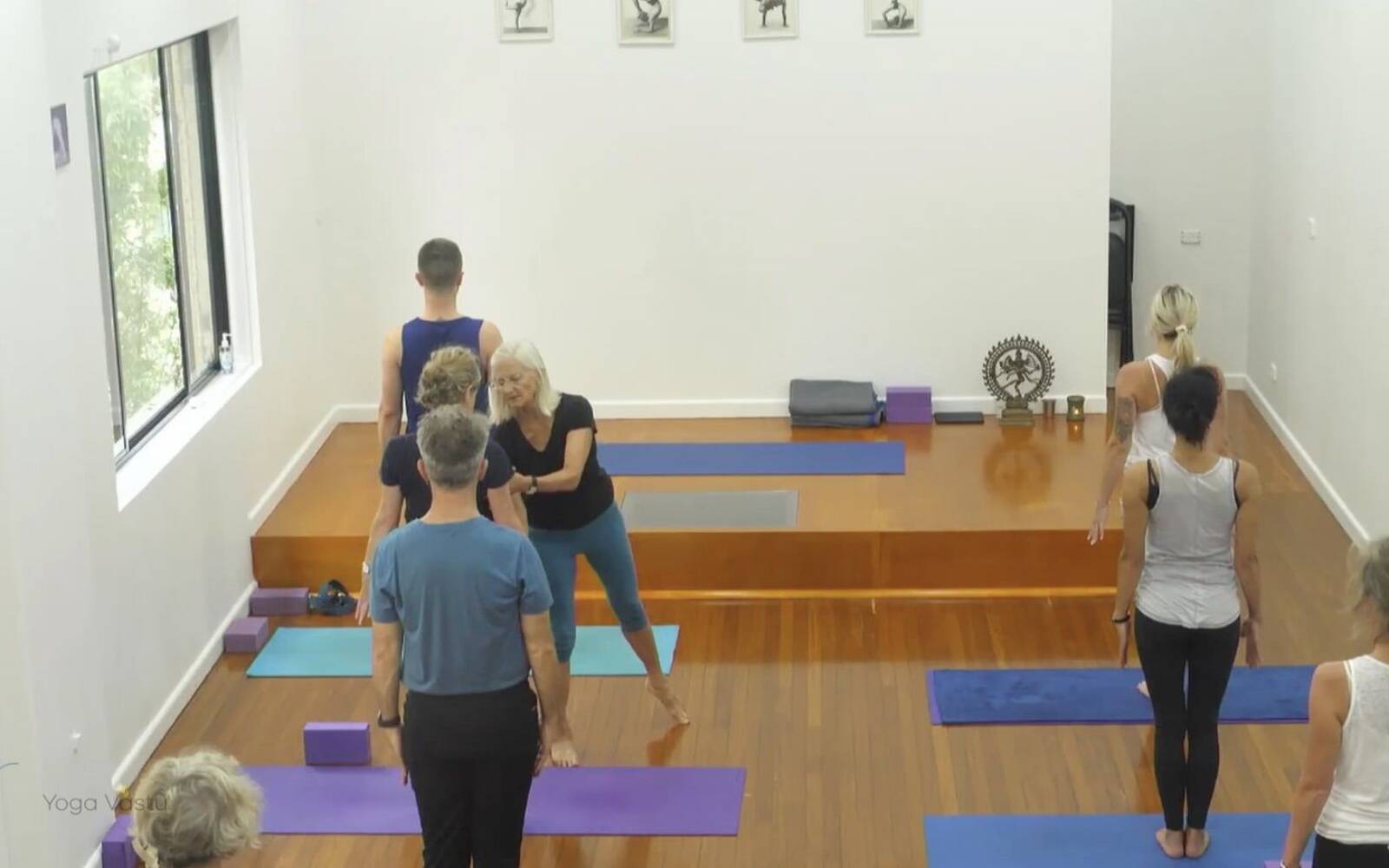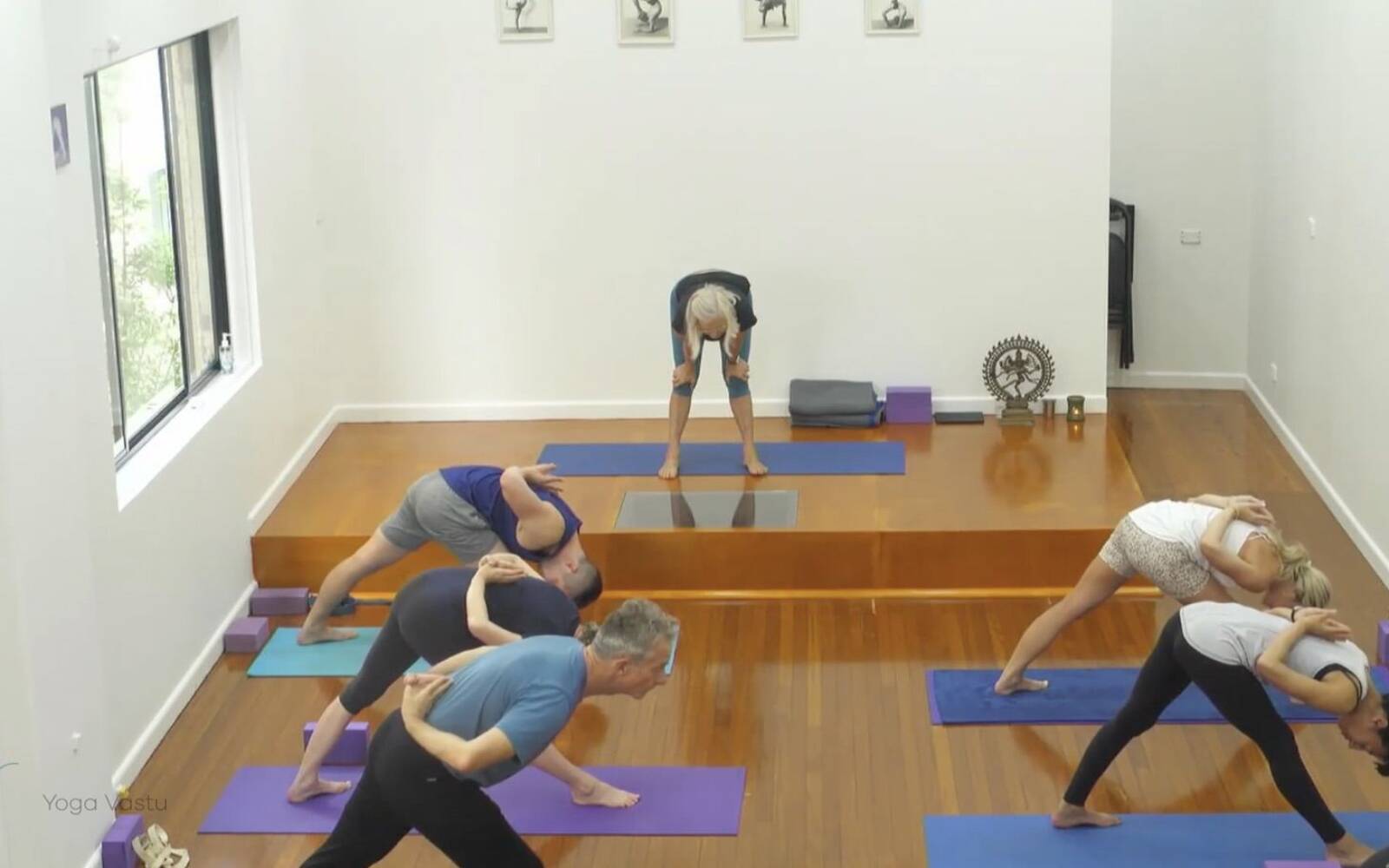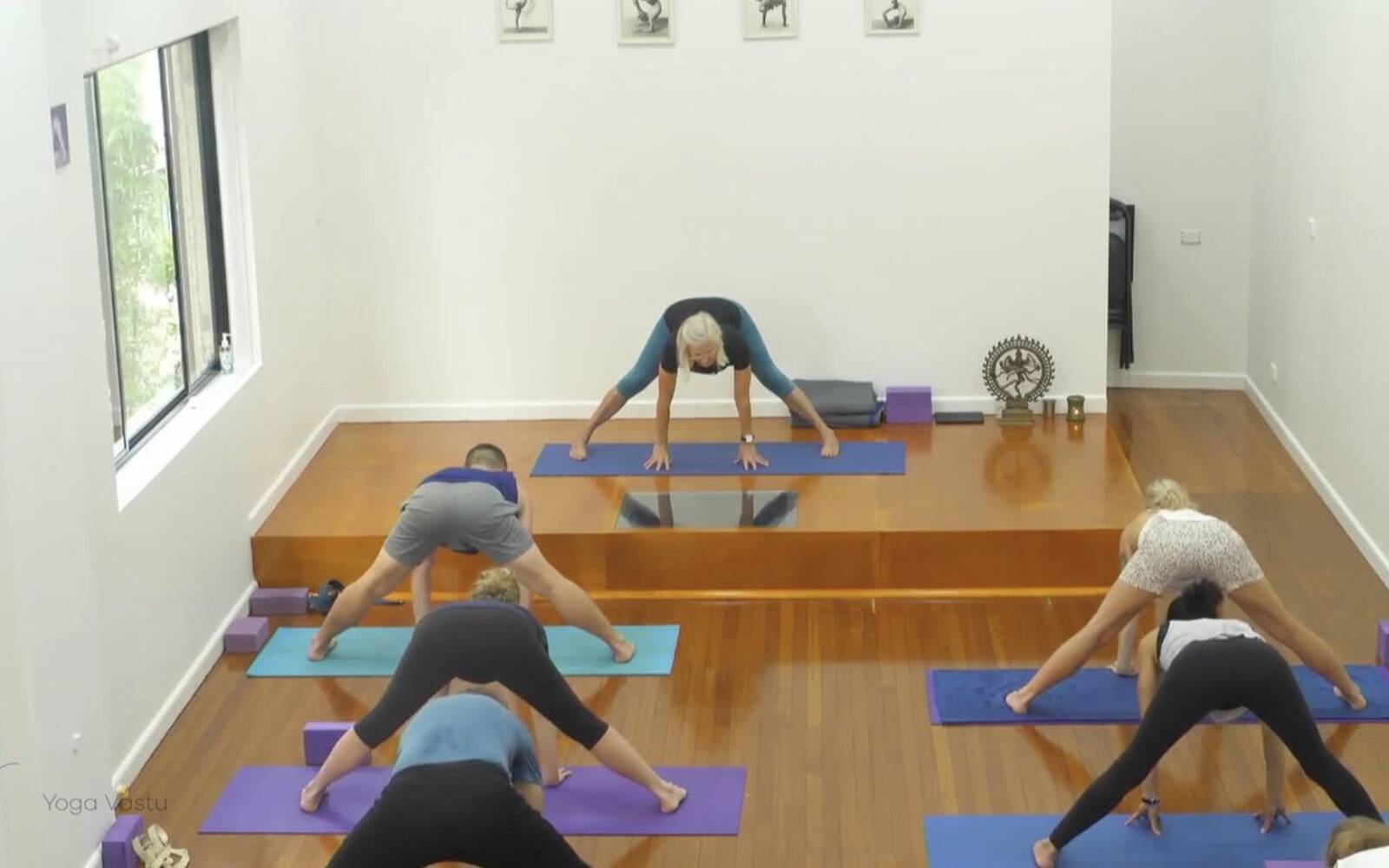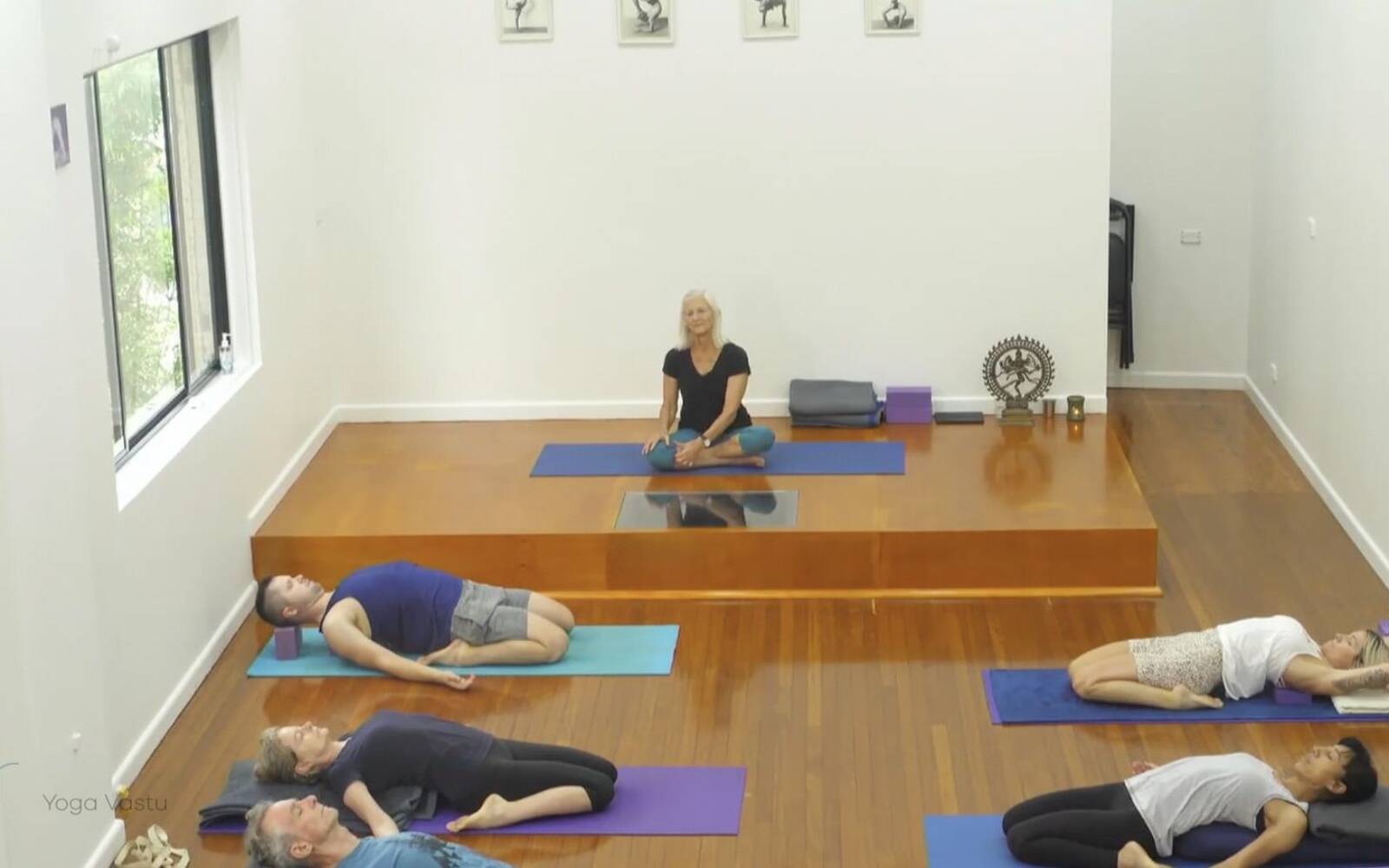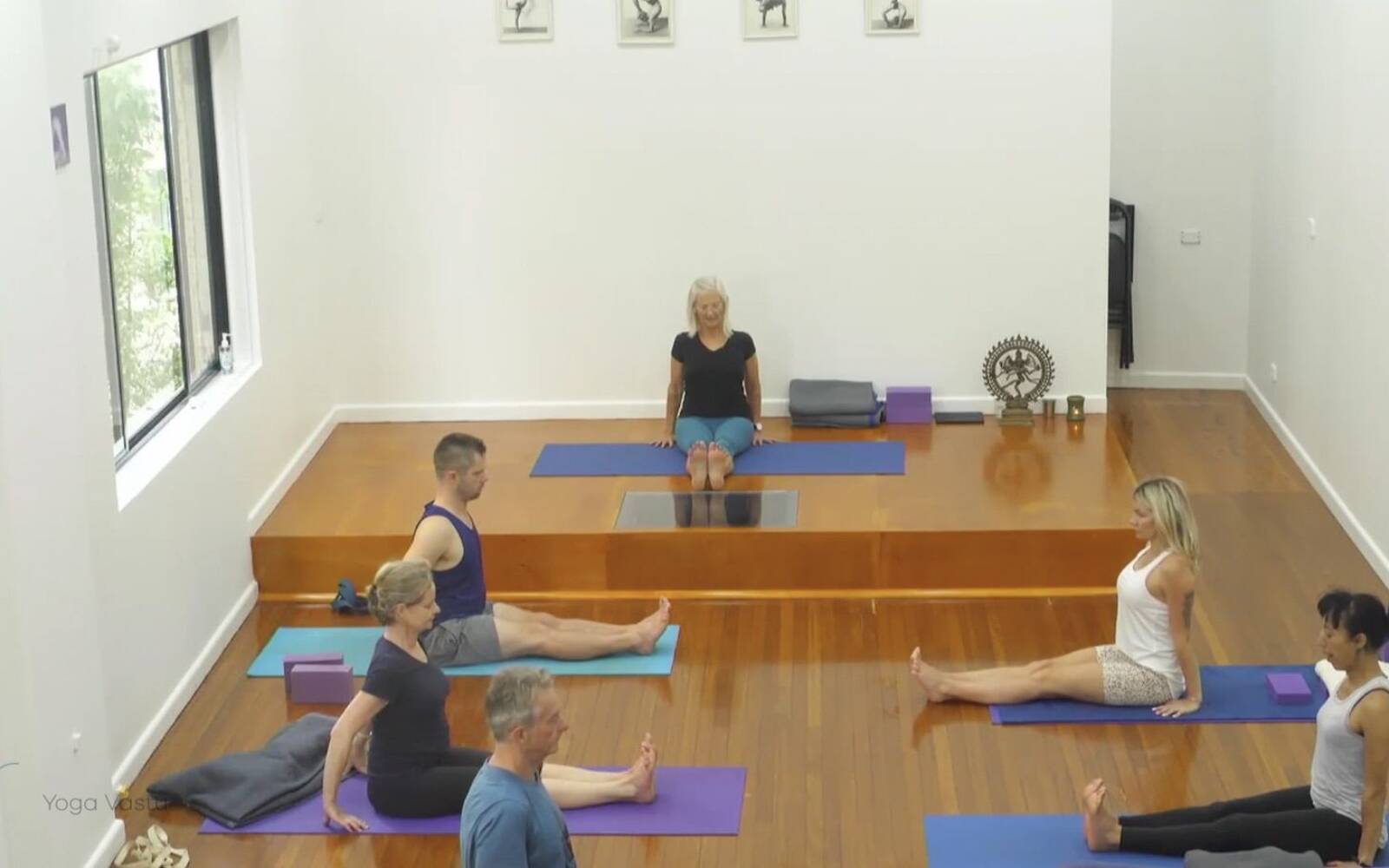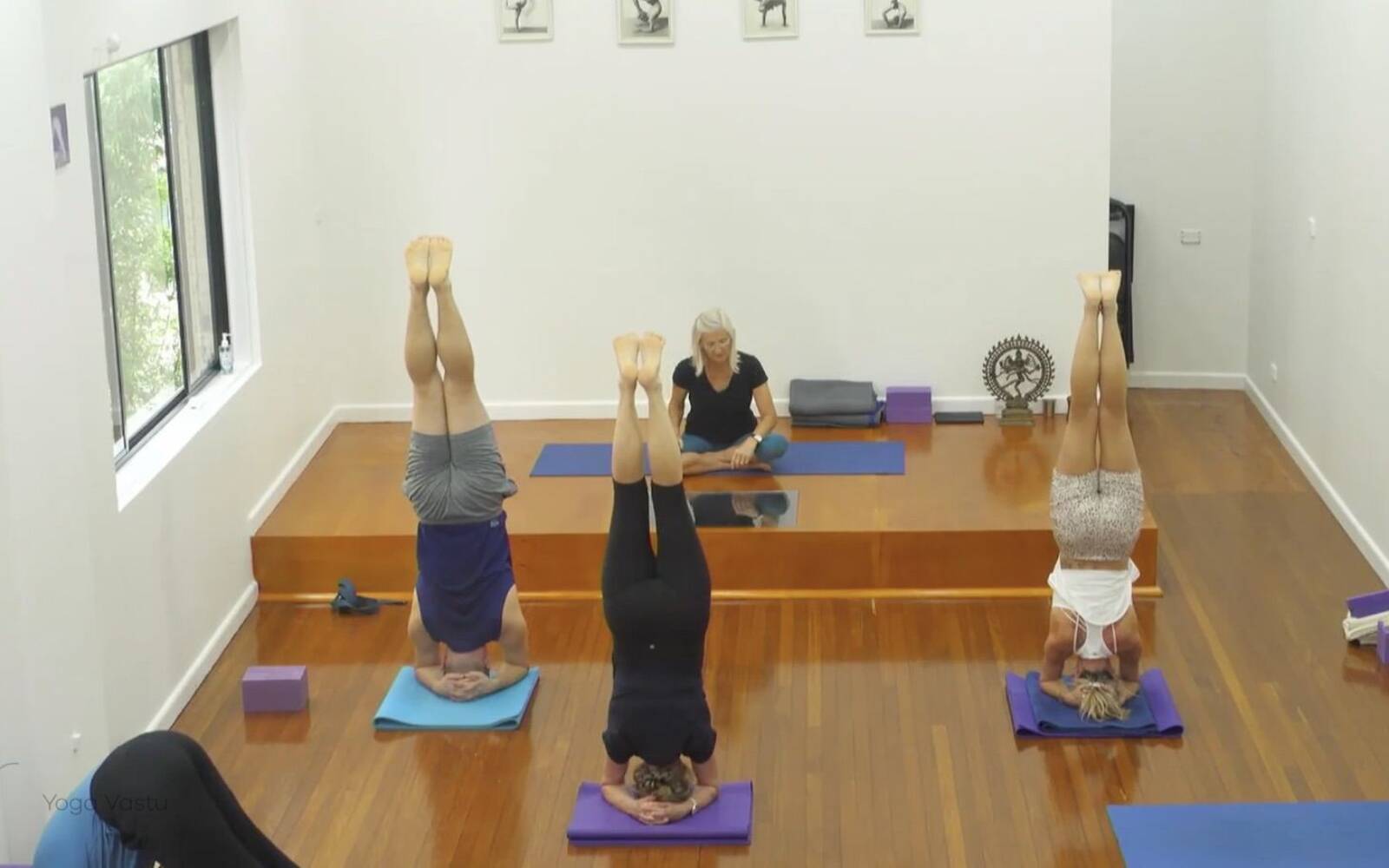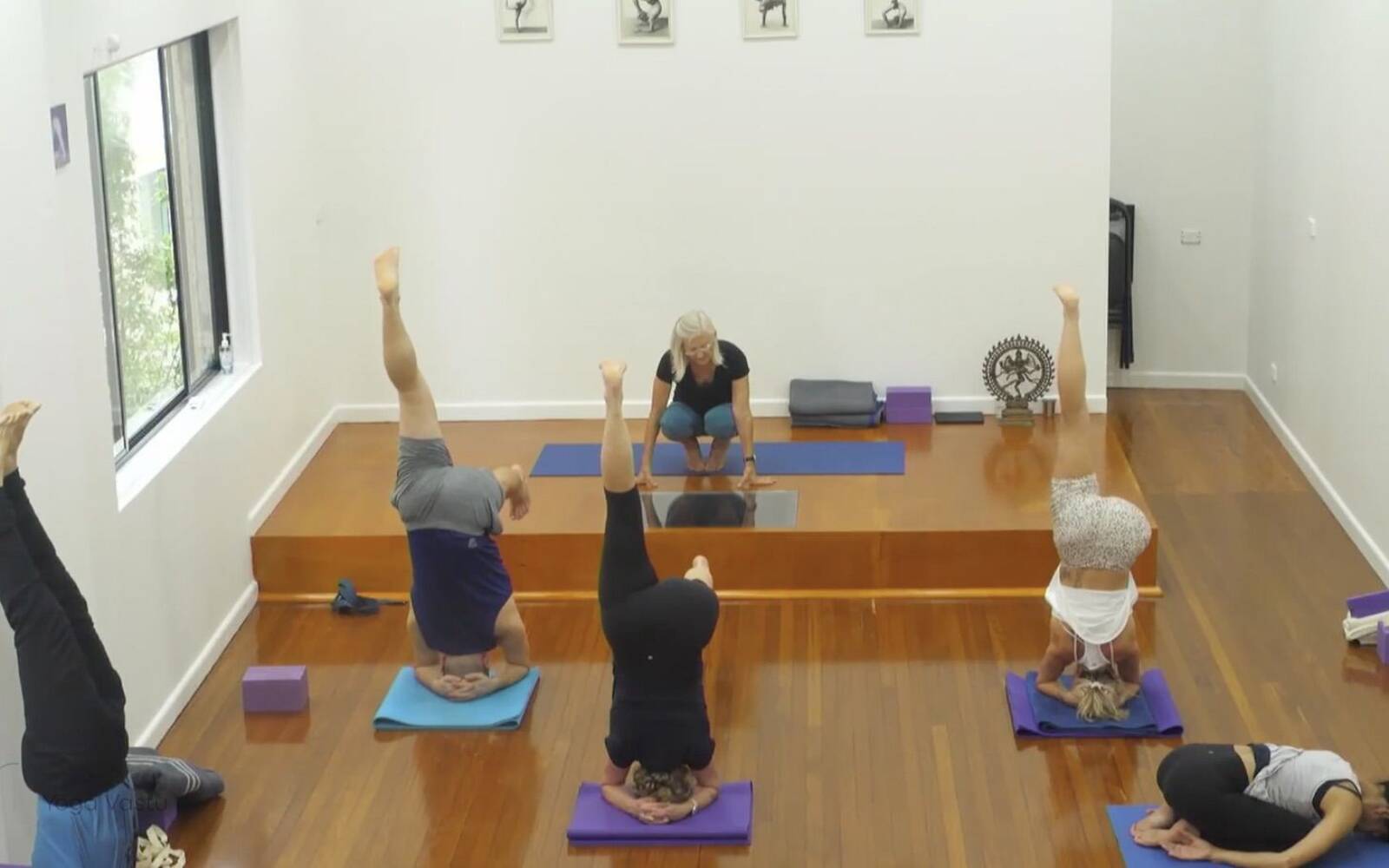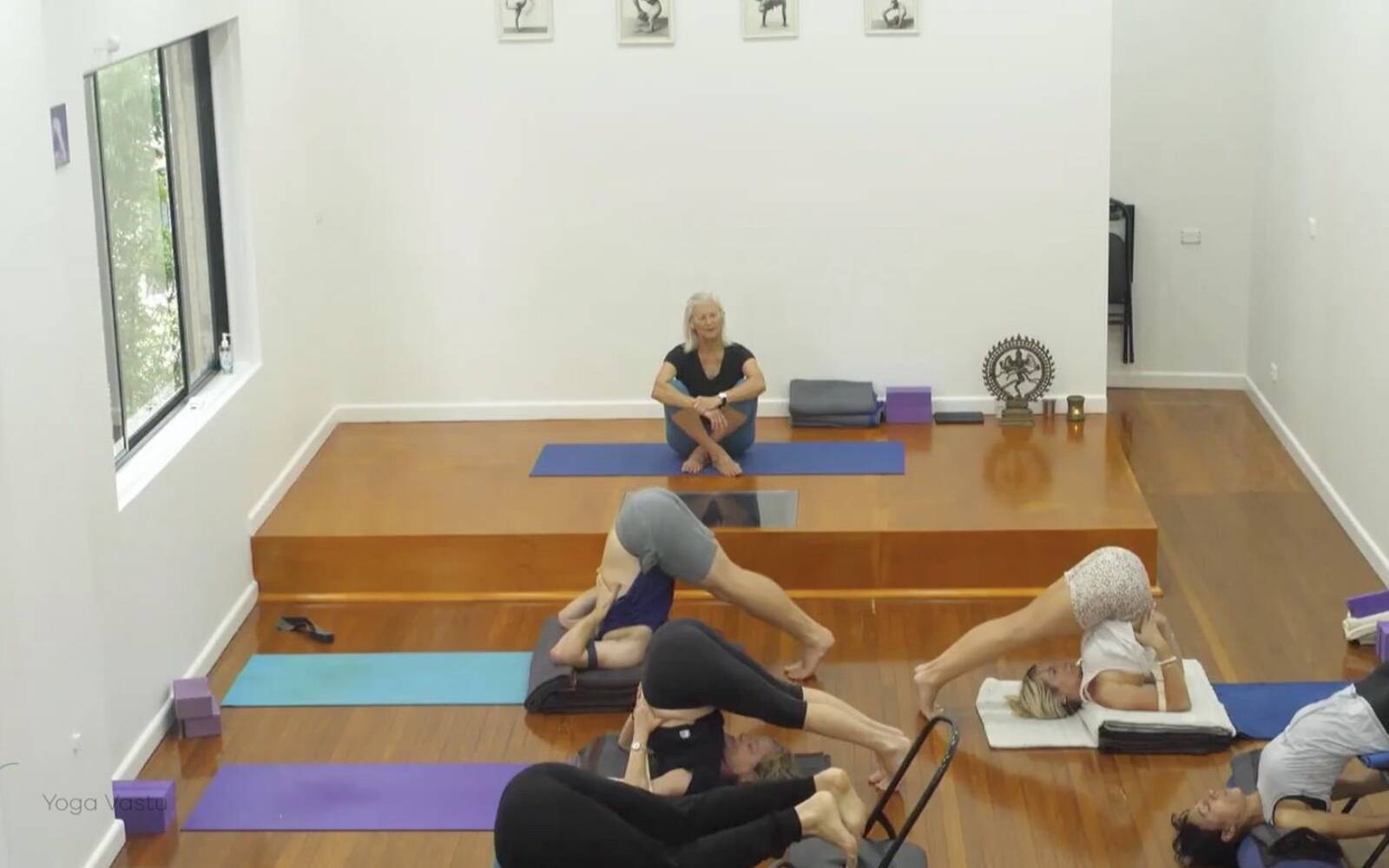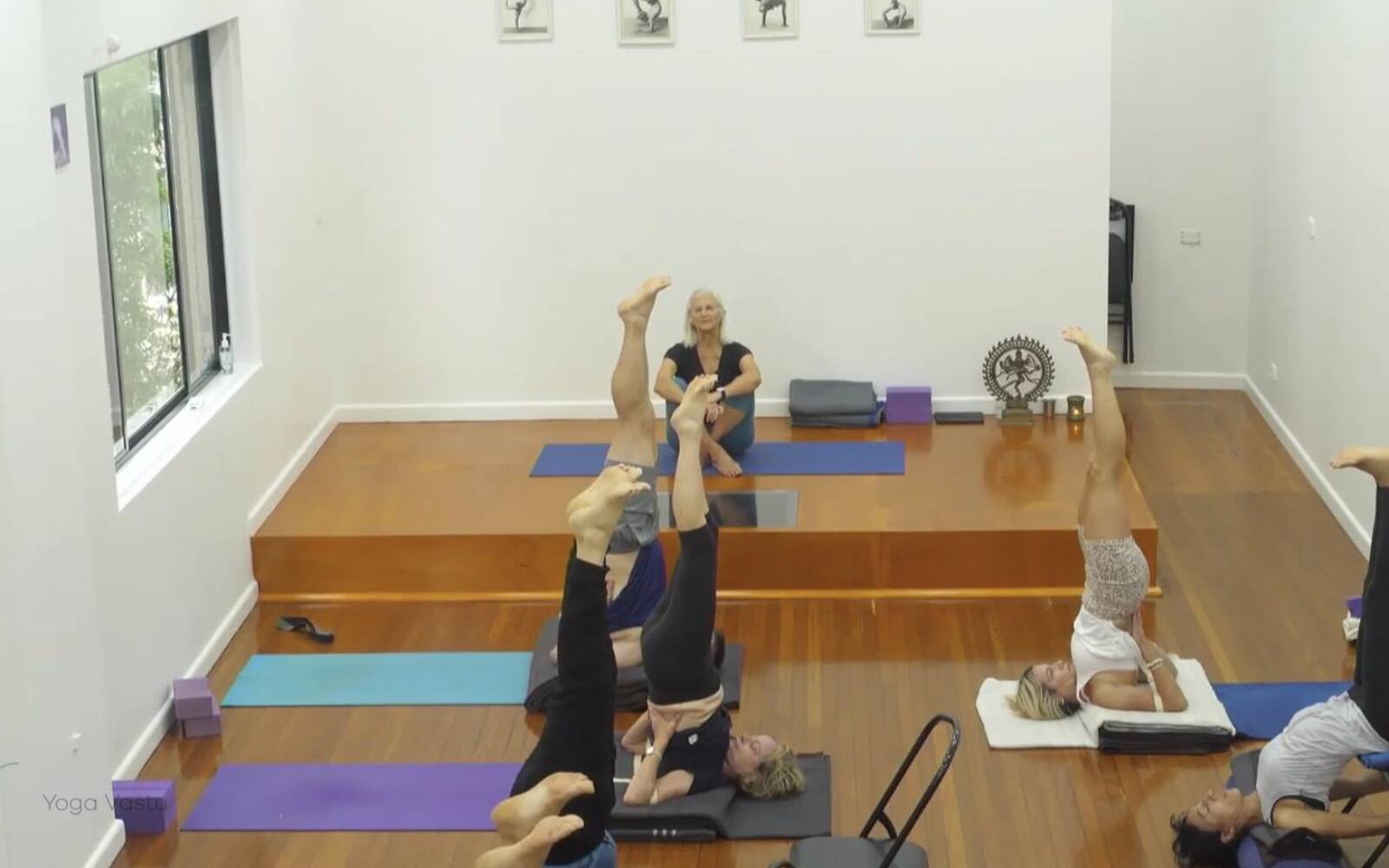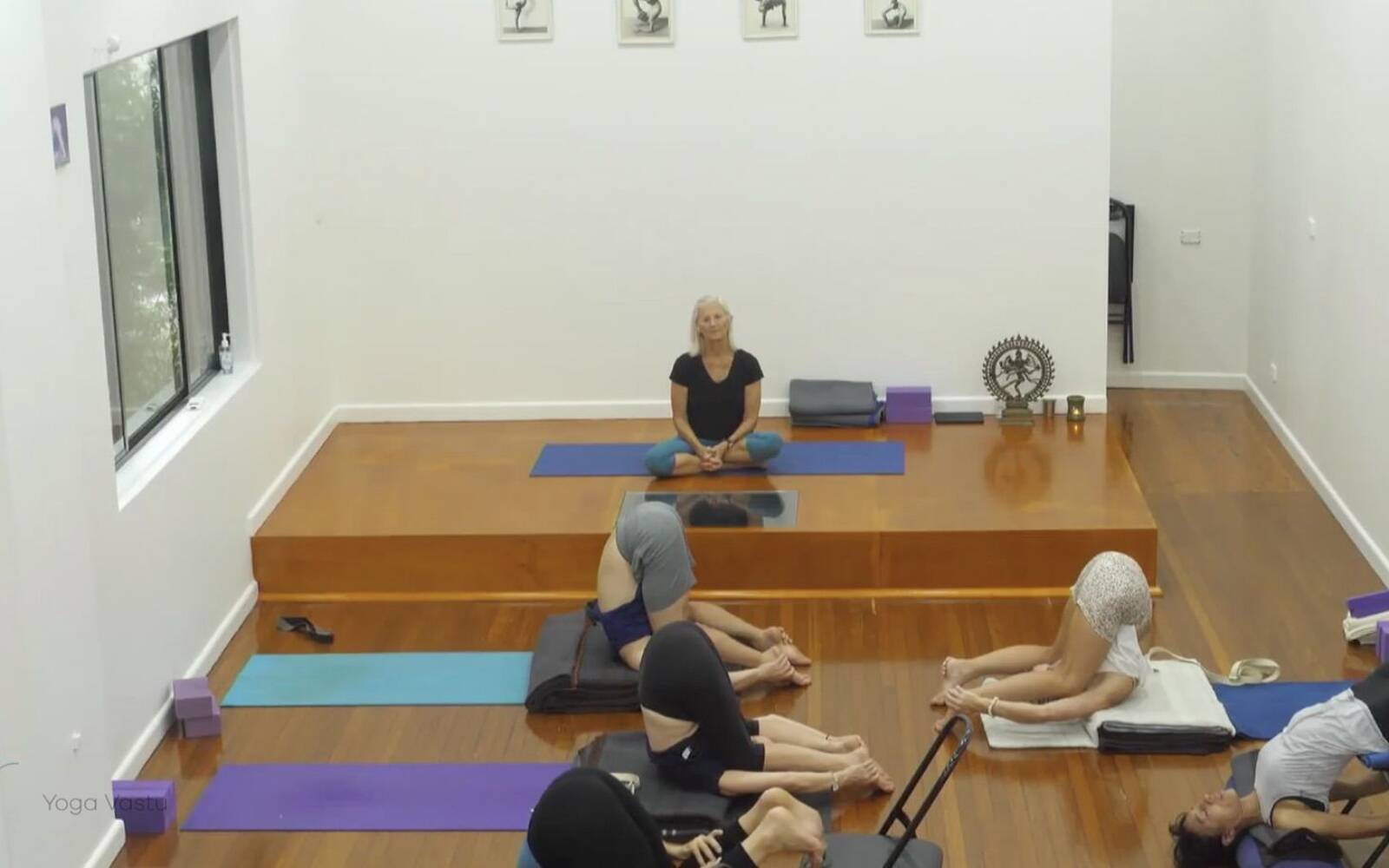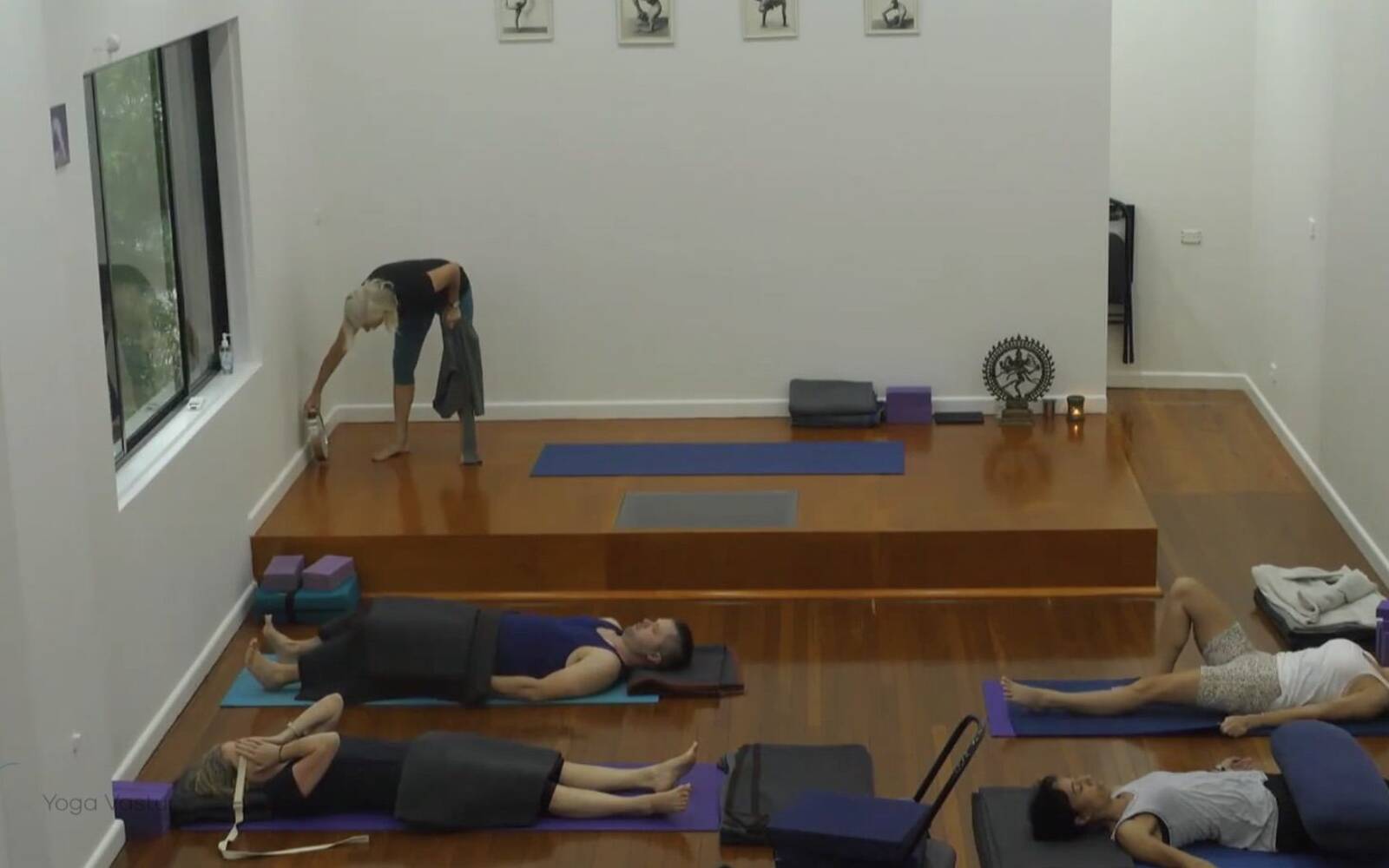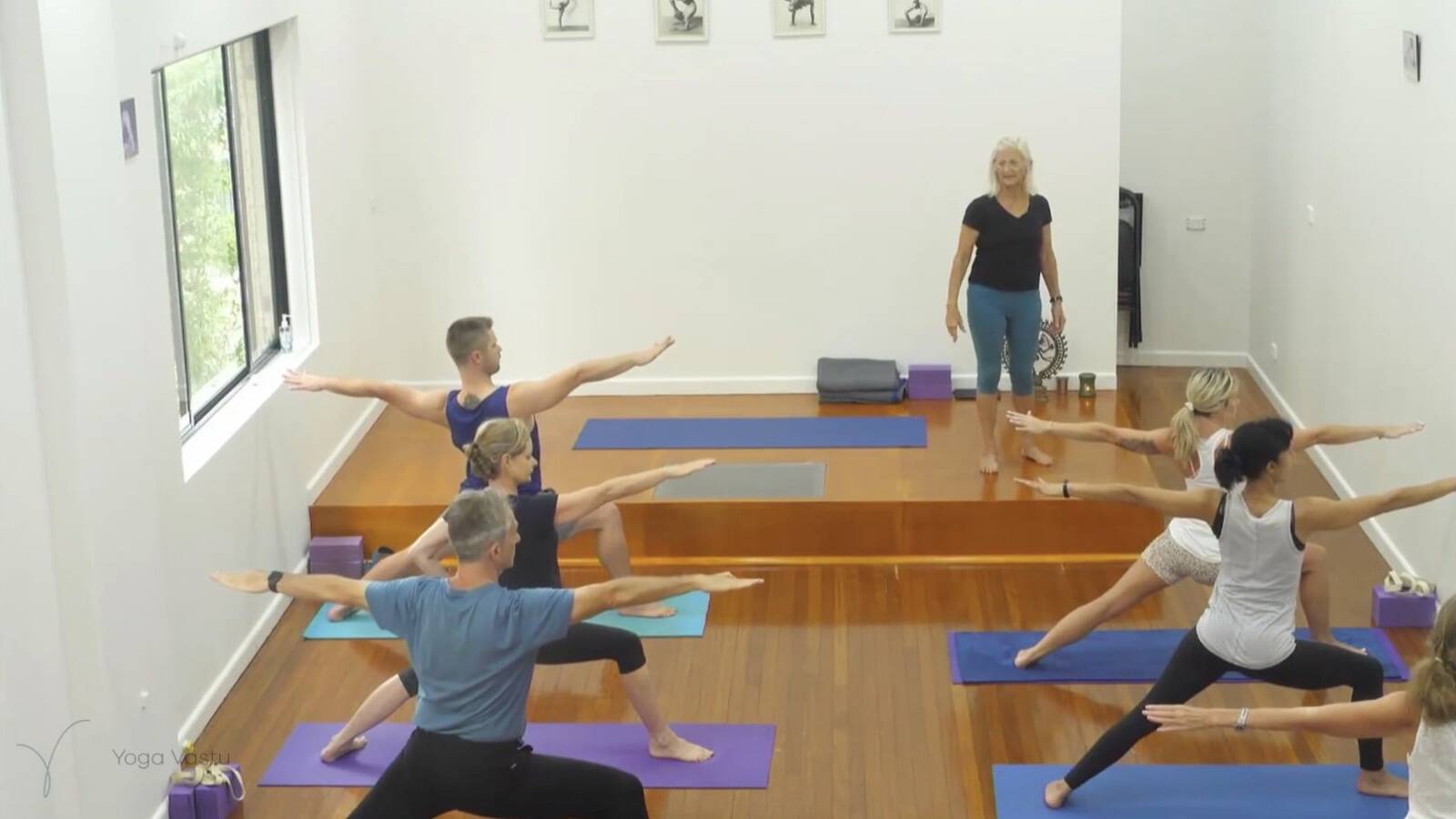Standing poses are fundamental in Iyengar yoga. They provide a solid foundation for one’s practice, emphasising alignment, stability, and strength. In Iyengar yoga, standing poses are more complex than it might appear at first glance and remain a key part of every student’s practice, regardless of how experienced they become.
The benefits of standing poses in Iyengar yoga are numerous. They improve posture, balance, and alignment, helping to correct structural imbalances in the body. These poses build strength and flexibility in the legs, core, and spine, enhancing overall physical stability. Furthermore, they enhance mental focus, as concentration is essential to maintain proper alignment and balance. Regular practice of standing poses also aids in reducing stress and anxiety, promoting a sense of grounding and stability.
The regular practice of standing poses influences not only one’s yoga practice but daily life as well. They improve body awareness, encouraging better posture and movement patterns throughout the day. The mental discipline and concentration developed in standing poses extend to tasks beyond the mat, promoting a sense of mindfulness and focus. The strength and stability gained through these poses can help prevent injuries and maintain a healthier, more active lifestyle, making them a vital component of Iyengar yoga and overall well-being.
In this class, students will go through some of the most foundational standing poses like Tadasana, Utthita Trikonasana, Utthita Parsvakonasana, and Utthita Hasta Padangusthasana, then followed by more advanced poses, including standing balances like Ardha Chandrasana and standing twists such as Parivritta Trikonasana and Parivritta Parsvakonasana. We will also include a few inversions to help us balance out this sequence and enhance the benefits of the standing poses.
In Iyengar yoga, practising inversions side by side with standing poses can significantly compound the benefits of each asana type. Inversions, such as headstands and shoulder stands, help increase circulation, bringing fresh oxygen and nutrients to the brain and upper body. This can help improve alignment and awareness. Inversions also provide a unique perspective on the world, encouraging practitioners to see the pose from a different angle and refine their form.
Twisting actions are a vital component of standing poses in Iyengar yoga. For example, in postures like Parivritta Trikonasana or Parivritta Parsvakonasana, twisting actions stimulate and detoxify internal organs, aiding digestion and eliminating waste products. They also enhance spinal mobility, promoting a healthy range of motion and relieving tension in the back. Additionally, twists in standing poses engage the obliques, helping to strengthen the core and promote balance. Overall, twisting actions in standing poses bring an element of spinal health, vitality, and purification to the practice, making it a well-rounded and holistic approach to yoga.
Video stills from this sequence
